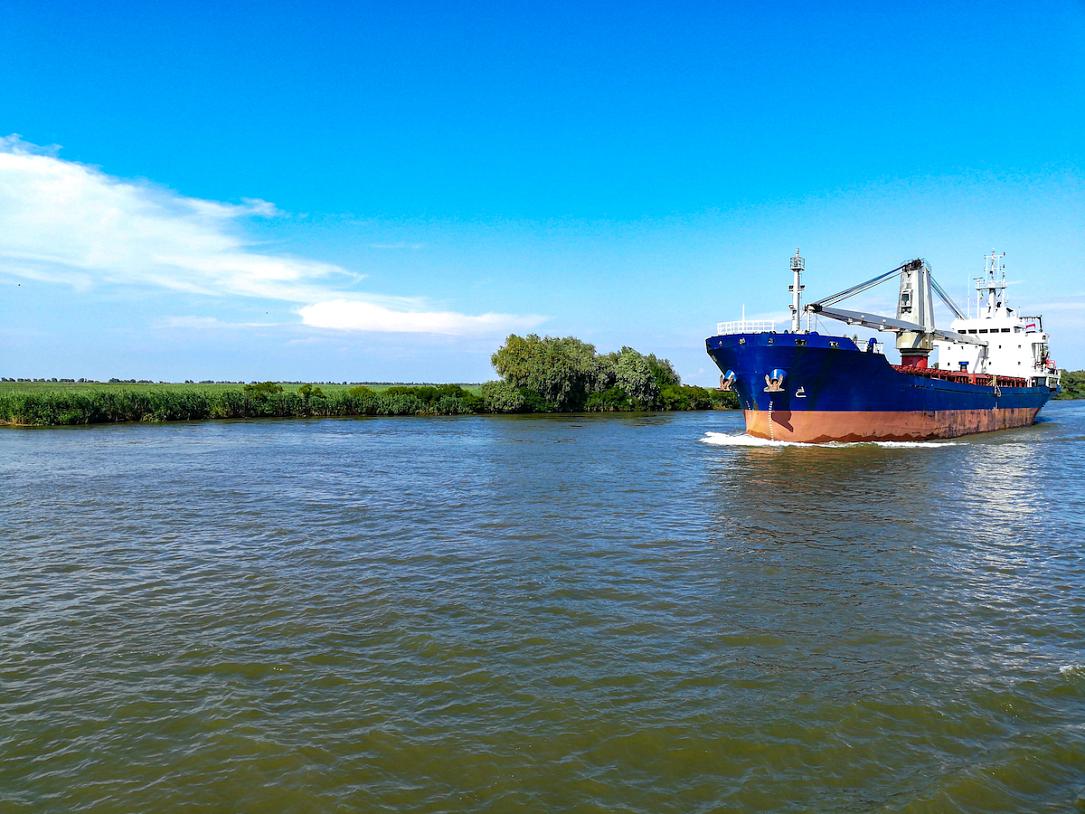Ukrainian exporters blame Romanian authorities for shipping jams on Sulina canal



Ukrainian exporters of agricultural products are blaming Romanian authorities for inaction regarding the shipping jams on the Sulina canal, where dozens of ships wait days on end to process shipments, racking up costs of USD 500,000 a day.
The restricted operating schedule and the insufficient number of berths are the main reasons for the jams, according to the Ukraine-based European Businesses Association (EBA). The resulting delays around the canal are costing Ukrainian agricultural exporters heavily.
Most Ukrainian ports are still blockaded by Russian ships and mines, forcing exporters to go through Romania’s Danubian ports and the Sulina canal.
“Companies that are part of the EBA say that nearly 90 ships are lined up near the canal at present. They will be there for an average of 10 days or more. Every day of waiting costs Ukrainian exporters approximately USD 500,000,” said an EBA in a statement quoted by Profit.ro.
The EBA, whose role is to look for solutions to problems that affect the functioning of businesses in Ukraine, has appealed to the UN secretary general’s office, the European Commission, and Ukrainian delegates to Romania for help.
The exporters want Romanian authorities to be able to inspect at least six ships simultaneously and not just two, as it is now. They also want a longer schedule for port authorities, and the possibility to cross the canal at night, which would double the transport capacity. Higher transit speeds and one-way traffic are also part of the measures proposed by the EBA.
Due to the blockade, Ukraine can only export around one million tons of grains per month. A little over that passed mainly through Romanian ports in April. In June, however, Romanian wheat and barley crops will also be available for export, ramping up competition among exporters vying for berths.
Aware of the situation, authorities in Kyiv still hope to be able to ship around 700,000 tons of cereal per month through Romania. Most of that will go to northern Africa and Asia. In theory, another two million tons should reach western Europe by railway – but so far only a small fraction of that figure is being transported using this route.
Railway-based shipments are costly because the gauge of the Soviet-era railways is 9 centimeters wider than most European railways. As a result, wagons full of cereal coming from Ukraine cannot transit European railways. The cereal has to be unloaded and then loaded again in different trains, or the wagons have to be lifted and modified before they can go on.
The added costs of the entire process make railway-based transport of Ukraine’s agricultural products costly and time-consuming. For now at least, Romania’s ports remain the only real option for Ukrainian exporters.
radu@romania-insider.com
(Photo source: V/o®el Photography | Dreamstime.com)